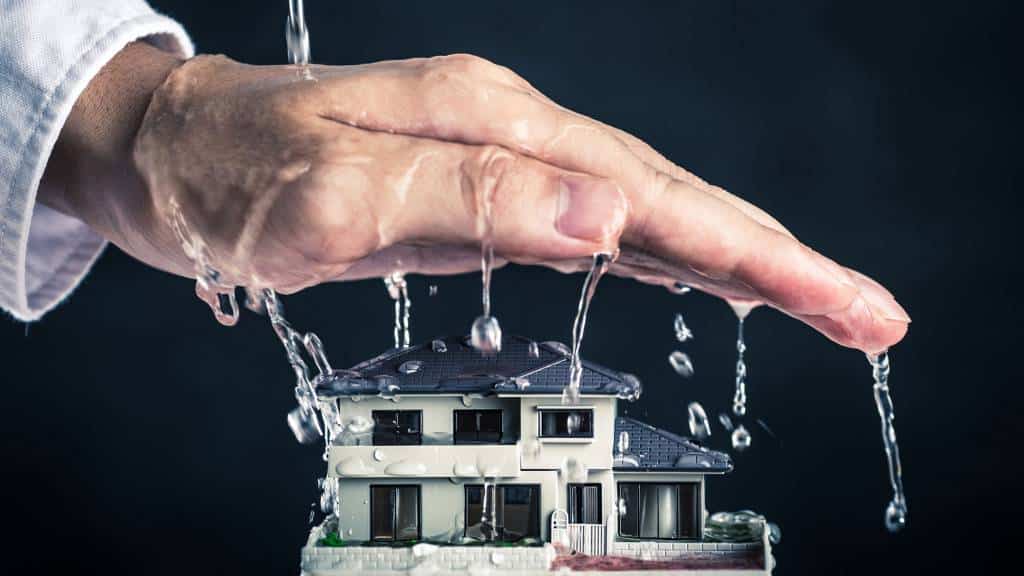They are making a number of good annotation on the subject of How Fast Water Damage Can Ruin Your Home overall in this content on the next paragraphs.

Leakages not only cause waste of water however can additionally create unneeded damages to your residence and promote unwanted organic growth. Water leaks might go unnoticed considering that most of the pipework in our house is hidden. By looking and also recognizing for daily circumstances that cause leakages, you can secure your house from future leakages and also unnecessary damage. Today, we will consider six leak triggers that may be causing your pipelines to drip.
Instantaneous temperature level changes.
Extreme temperature level adjustments in our pipelines can trigger them to expand and get suddenly. This growth as well as tightening may trigger fractures in the pipelines, specifically if the temperature are below cold.
Rusty water systems
As time passes by, your plumbing system ages and also rust such as corrosion may start gnawing the pipelines. This might be the source of discoloration or warping on your water pipes. This asks for an evaluation with your plumber instantly. Think about replacing the pipes because they are at a higher risk of corrosion than the more recent versions if our plumbing system is old.
Defective Pipe Joints
The point at which your pipelines connect is frequently the weakest link in the waterline. Pipe joints can deteriorate in time, resulting in water leaks. The majority of pipe joints are not easily noticeable. If you have loud pipes that make ticking or banging noises, specifically when the warm water is switched on, your pipe joints are possibly under a lot of pressure. It is recommended to have your plumber examine your system annually.
Trespassing roots
A lot of water leakages start outside your home instead of inside it. If you discover an unexpected decrease in water pressure, claim in your faucet, take some time to go out and examine your backyard. You may discover wet spots or sinkholes in your lawn, and that could indicate that tree origins are getting into water lines triggering water to leak out. You can have your plumber check for intrusion, especially if you have trees or shrubs near your residential property.
Poor Water Connectors
At times, a leak can be caused by loose tubes and also pipelines that supply your appliances. Generally, shifting is what causes the loosened water Connections. You might discover when it comes to a washing machine, a pipe may spring a leak because of trembling during the spin cycle. In case of a water connections leakage, you may observe water running directly from the supply line or puddles around your home appliances.
Blocked Drains
Blocked drains might be annoying as well as inconveniencing, however they can in some cases end up creating an overflow causing burst pipes. Maintain getting rid of any kind of products that may drop your drains pipes that might obstruct them to prevent such aggravations.
All the above are reasons for leaks however not all water leakages arise from plumbing leaks; some leakages might originate from roofing leakages. All leaks ought to be fixed right away to stay clear of water damage.
Leakages not only cause waste of water but can likewise cause unneeded damage to your house as well as advertise unwanted organic development. By looking and also comprehending for everyday scenarios that trigger leakages, you can secure your residence from future leaks and unnecessary damages. Today, we will look at 6 leak triggers that might be triggering your pipes to drip.
At times, a leakage can be triggered by loose tubes and pipelines that provide your devices. In case of a water links leakage, you might observe water running directly from the supply line or puddles around your home appliances.
How To Check For Water Leak In Your Home
How To Check for Leaks
The average household's leaks can account for nearly 10,000 gallons of water wasted every year and ten percent of homes have leaks that waste 90 gallons or more per day. Common types of leaks found in the home are worn toilet flappers, dripping faucets, and other leaking valves. These types of leaks are often easy to fix, requiring only a few tools and hardware that can pay for themselves in water savings. Fixing easily corrected household water leaks can save homeowners about 10 percent on their water bills.
To check for leaks in your home, you first need to determine whether you're wasting water and then identify the source of the leak. Here are some tips for finding leaks:
Take a look at your water usage during a colder month, such as January or February. If a family of four exceeds 12,000 gallons per month, there are serious leaks.
Check your water meter before and after a two-hour period when no water is being used. If the meter changes at all, you probably have a leak.
Identify toilet leaks by placing a drop of food coloring in the toilet tank. If any color shows up in the bowl after 10 minutes, you have a leak. (Be sure to flush immediately after the experiment to avoid staining the tank.)
Examine faucet gaskets and pipe fittings for any water on the outside of the pipe to check for surface leaks.
Undetected water leaks can happen without the home or business owner even realizing. If you suspect a water leak, but not able to find the source. It is time to contact a professional water leak detection service, The Leak Doctor.
How To Find a Water Leak In Your Home
https://www.leakdoctor.com/blog/How-To-Check-For-Water-Leak-In-Your-Home_AE197.html

As a keen person who reads about How to detect water leaks in your home, I was thinking sharing that excerpt was a great idea. Do you know about anybody else who is curious about the subject? Please feel free to share it. Kudos for your time. Please pay a visit to our blog back soon.
Pro help, one ring away.